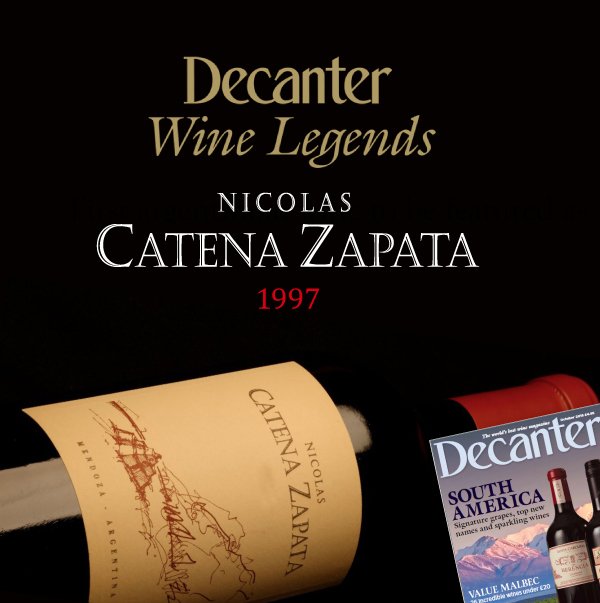Decanter Wine Legends - Nicolás Catena Zapata 1997
DECANTER - Stephen Brook - October 2018
A legend because...
It was Nicolás Catena, whose grandfather had left Italy to settle in Argentina in 1902, who thrust Argentinian wine into the modern era. A widely travelled academic economist, he learned from his exposure in the 1970s both to great Bordeaux and the huge promise of Napa wines. In the early 1980s, Catena and his consultants, including Paul Hobbs and Jacques Lurton, agreed the key was to plant the right varieties in the right location, specifically cooler, higher sites where jamminess would not be an issue. Catena had also worked at the family winery and was able to supervise the selection of high-quality plant material. The Nicolás Catena Zapata demonstrated the fruition of his aspiration and hunches.
Other Wine Legends featured at previous Decanter issues:

Looking back
By the mid-1990s, Catena’s experiments were bearing fruit. With her own background in science, his daughter Laura assisted him greatly, helping to bring a specifically Argentinian identity to the Catena wines. Vineyards were planted at different altitudes to produce a hierarchy of wines, but the project’s finest achievement was the Nicolás Catena Zapata. The 1997 was the first vintage, vinified by then winemaker José Galante. After its release in 2000 it was entered into blind tastings with other 1997 wines such as Château Latour, Opus One, Caymus Special Selection and Solaia, and the Argentinian wine regularly took first or second place.
The vintage
A warm dry spring delivered a good crop of healthy grapes, though there was sporadic hail damage in some sites. The summer was hot and prolonged, and despite some storms, careful viticulture ensured good aeration and no rot. The rest of the season was mild and sunny with cool nights. The fruit at harvest was highly concentrated, with ripe tannins and fine acidity to balance the sugars.
The terroir
The Cabernet Sauvignon grapes were grown at 950m in the alluvial loam and clay soils of Catena’s La Pirámide vineyard in Luján de Cuyo, cool nights and clay soils helping to preserve acidity. The small Malbec component was sourced from the 60-year-old Angélica vineyard at 920m, where the soil is mostly gravel and loam. This site has some pre-phylloxera vines that are the source of all plantings of Malbec in the Catena vineyards.
The wine
On the advice of Tuscan consultant Attilio Pagli, the wine was fermented at a lower temperature than was customary at that time in Argentina. It was aged for 18 months in 80% new barriques – reduced in subsequent vintages to 50%. There were regular rackings, although there are fewer nowadays.
The facts
- Bottles produced: 9,000
- Composition: 95% Cabernet Sauvignon, 5% Malbec
- Alcohol: 14.4%
- Release price: $80
- Price today: N/A
The reaction
Robert Parker welcomed the wine in 2000: ‘...sensational nose of crème de cassis liqueur intermixed with toasty oak. Unevolved and supple, with enormous concentration and richness in addition to a funky, grilled meat flavour.’ Patricio Tapia also tasted the wine soon after release, finding ‘ripe fruit flavours of a relatively warm vintage, but also an intense acidity and a firm structure of tannins to support that load. A wine designed for long ageing in bottle’. In 2001, James Molesworth said: ‘Goes for the gusto, and pulls it off. Dense texture, with gobs of cassis, kirsch and blackberry – like the distilled essence of Cabernet fruit... Muscular, yet suave.’ In 2016 Stephen Tanzer found the wine showed ‘deep aromas of cassis, black cherry, menthol and chocolate, lifted by a minty nuance. Very smooth and fresh, with its juicy dark fruit flavours enlivened by elements of crushed stone, eucalyptus and spicy oak... Not a powerful style but this sexy Cabernet is full of life... A distinctly claret-like drink.’